

Hitler's Children. Hitler's Secret Weapon. As the Second World War began to draw to a close, the scientists and designers of Hitler's Germany were employed in a frantic race to create new ideas that would turn the tide of the conflict.
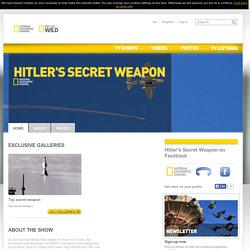
They developed some of the most sophisticated and advanced weaponry of the age - the so-called Wunderwaffen or Wonder Weapons. From missiles and enormous tanks, to the biggest gun ever built and the prototype of a plane capable of launching a suicide bombing raid on the skyscrapers of New York. Hitler's Secret Weapon shows how they helped the technology of war advance generations in little more than a decade. Hitler on Ice: Did the Nazis Have a Secret Antarctic Fortress? As if I needed more evidence that I have a really awesome job, I occasionally get emails from my editor, Jason, that say things like, "A reader just left a comment about Nazis looking to form a super-advanced civilization in Antarctica.
Can we add that to the list of things to investigate? " © Bettmann/CORBIS While there are more than a few conspiracy theories that deal with the Nazis and advanced ancient and/or alien civilizations, the supposed Nazi/alien/Antarctica connection, as told by a number of paranormal/conspiracy writers, can be summed up like this: the Nazis claimed an area of Antarctica as German territory and sent an expedition there + the Nazis experimented with innovative technology like stealth aircraft and liquid-propellant rockets = the Nazis in Antarctica must have found alien technology or met actual aliens. It would make an excellent summer action movie, but are these stories based on anything? Like many conspiracy theories, there are some elements of truth to it all. Hitler Youth: Hitler's Boy Soldiers 1939-1945. On September 1st, 1939, Hitler's armies invaded Poland.
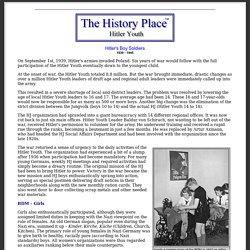
Six years of war would follow with the full participation of the Hitler Youth eventually down to the youngest child. At the onset of war, the Hitler Youth totaled 8.8 million. Invasion of Poland, Fall 1939. One of Adolf Hitler's first major foreign policy initiatives after coming to power was to sign a nonaggression pact with Poland in January 1934.
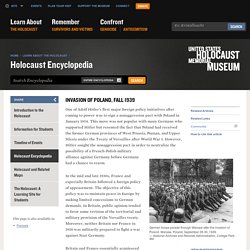
This move was not popular with many Germans who supported Hitler but resented the fact that Poland had received the former German provinces of West Prussia, Poznan, and Upper Silesia under the Treaty of Versailles after World War I. However, Hitler sought the nonaggression pact in order to neutralize the possibility of a French-Polish military alliance against Germany before Germany had a chance to rearm. In the mid and late 1930s, France and especially Britain followed a foreign policy of appeasement. The objective of this policy was to maintain peace in Europe by making limited concessions to German demands. In Britain, public opinion tended to favor some revision of the territorial and military provision of the Versailles treaty. On September 1, 1939, Germany invaded Poland. Further Reading Record, Jeffrey. Rossino, Alexander B. Hitler Youth Movement. The Death of Adolf Hitler. Mystery surrounded the death of Adolf Hitler for many years.
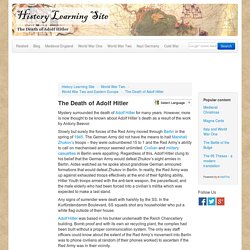
However, more is now thought to be known about Adolf Hitler’s death as a result of the work by Antony Beevor. Slowly but surely the forces of the Red Army moved through Berlin in the spring of 1945. The German Army did not have the means to halt Marshall Zhukov’s troops – they were outnumbered 15 to 1 and the Red Army’s ability to call on mechanised armour seemed unlimited. Civilian and military casualties in Berlin were appalling. Regardless of this, Adolf Hitler clung to his belief that the German Army would defeat Zhukov’s eight armies in Berlin. Any signs of surrender were dealt with harshly by the SS. Adolf Hitler was based in his bunker underneath the Reich Chancellery building. Propaganda Minister, Joseph Goebbels, had brought his wife and six children to the apparent safety of the bunker. Ncentration camps in Nazi Germany.
Concentration camps in Nazi Germany served a number of purposes.
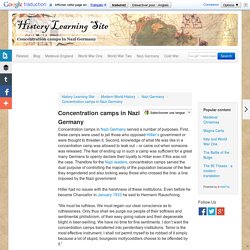
First, these camps were used to jail those who opposed Hitler’s government or were thought to threaten it. Second, knowledge of what life was like in a concentration camp was allowed to leak out – or came out when someone was released.